Every woman dreams of protecting her sofa from the negative impact of various factors. After all, over time, even with careful treatment, the seat material can wear out, the fabric can start to shine, this is especially true for the armrests, and holes and hard-to-remove stains can appear on the upholstery. To prevent this from happening, you need to put a cover on the sofa, which will help protect it from all sorts of problems. You can sew it yourself, especially since this is a very simple and exciting process.
- Benefits of upholstery covers for furniture renovation
- Shape, dimensions
- Materials, tools
- Necessary tools
- Materials for manufacturing
- How to choose fabric
- General recommendations for sewing
- Sewing a sofa cover with your own hands
- Taking measurements from the sofa
- Patterns of parts
- Calculation of the amount of material
- Secrets of high-quality tailoring
- Decorating the product
Benefits of upholstery covers for furniture renovation
Making covers for upholstered furniture, compared to replacing the upholstery, is a less labor-intensive process that does not require special professional training. The main advantages of covers include:
- maintaining furniture cleanliness;
- giving an original appearance;
- ease of use;
- aesthetics;
- ease of washing;
- low cost price;
- creation of an exclusive home design.
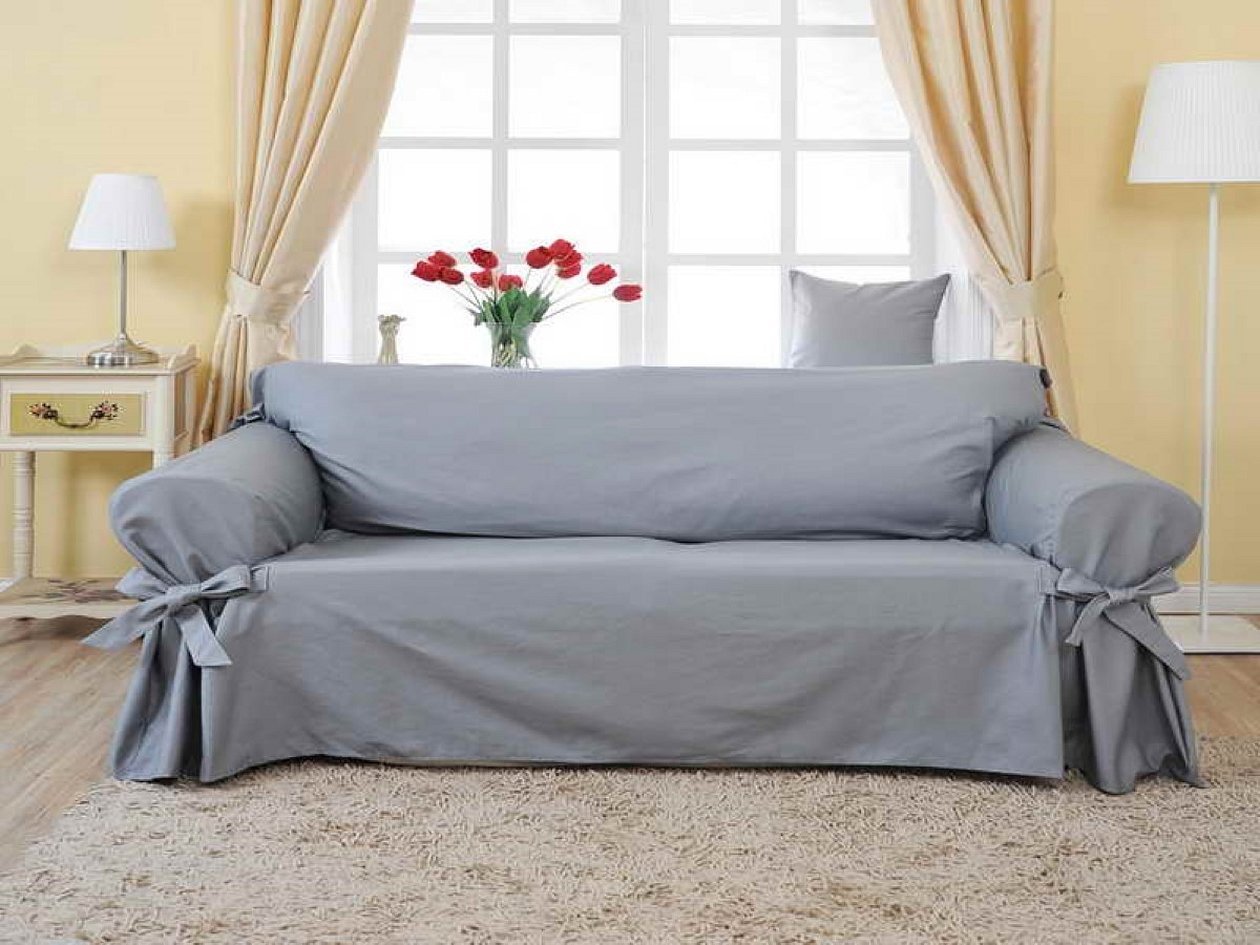
Furniture covered with a cover will always look like new. If you sew several options, you can constantly update the appearance and change the interior of the room as you wish.
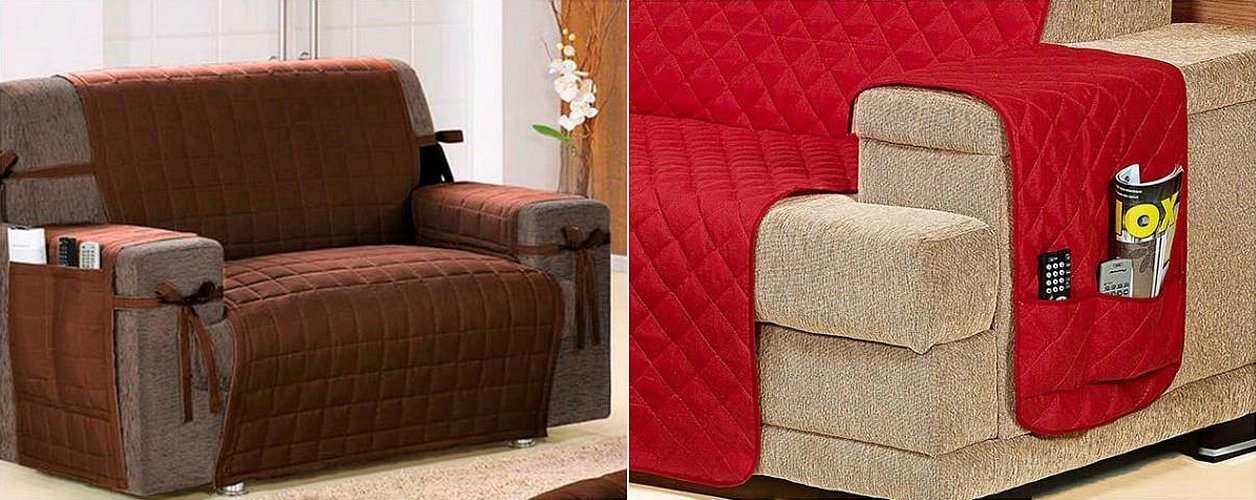
Shape, dimensions
Before sewing a sofa cover, you should take into account that furniture comes in different shapes. Modern sofas can be rectangular, angular, or shell-shaped.
Please note! The sofa cover must strictly correspond to the shape and size of the product.
Depending on the purpose of use, all covers have functional varieties:
- Universal – made of elastic material. It is easy to sew them yourself. They consist of two layers of special stretchy textile.
- Covers with a "skirt" - used to decorate interiors in country and Provence styles. The peculiarity of such sofa covers is the presence of a frill located along the bottom of the product.
- Elastic covers - are pulled over the product and secured with a sewn-in elastic band. Easily made with your own hands even without a pattern.
- Eurocover – when sewing, only special textile material is used, which takes any sofa shape. The textile consists of special fibers, distinguished by good elasticity. Such covers are considered practical. When sewing, there is no need for careful measurements. Often, these covers are used for corner sofas of any configuration.
The size of the cover depends on the shape, style of design and preferences of the owner. The measurement of upholstered furniture must be done carefully and competently.
Please note! To calculate the required volume of material for sewing a cover, you need to take two lengths and add two sofa widths to the result.
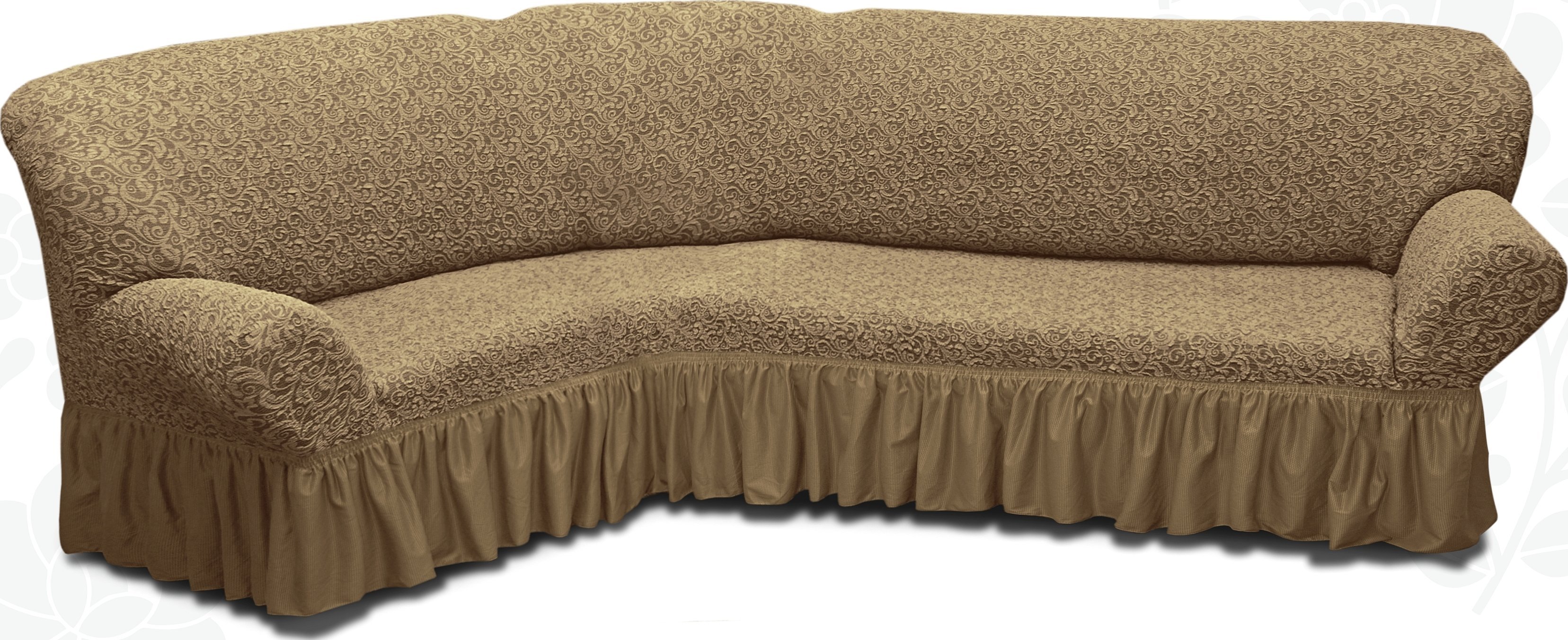
Materials, tools
Sewing sofa covers should begin with choosing the material and preparing all the necessary tools.
Necessary tools
To sew a cover for a sofa or armchair, you will need to prepare the following tools:
- scissors;
- measuring tape;
- overlock;
- threads;
- pins;
- chalk for marking;
- sewing machine.
The sewing machine should be designed for sewing medium and heavy fabrics.

Materials for manufacturing
There are a number of requirements for textiles for sofa coverings. Experts recommend giving preference to the following material:
- flock;
- microfiber;
- velour;
- cotton;
- jacquard;
- chenille;
- natural and artificial leather;
- natural and artificial fur.
First of all, the material must be wear-resistant, durable and easy to clean.
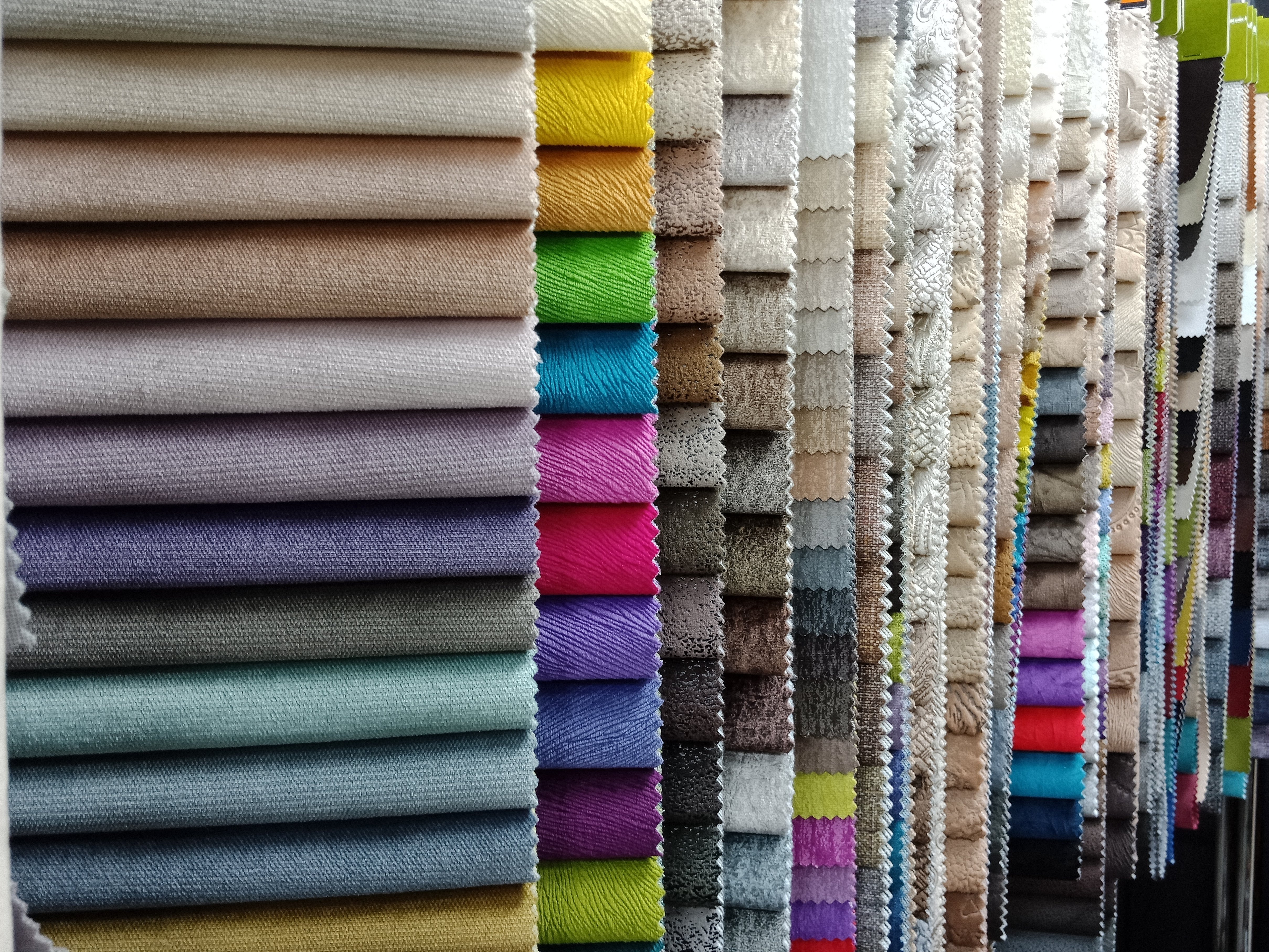
How to choose fabric
When choosing textiles, you should also consider the intended purpose of the room. For sewing a cover for a children's or playroom, it is best to purchase pleasant to the touch and environmentally friendly fabrics that are easy to clean. Cotton, microfiber, velor or chenille are ideal. When choosing a material for a living room or kitchen, you should give preference to practical, easy-to-care-for and resistant to external influences materials. In this case, it is recommended to purchase microfiber, eco-leather, leather, velor or jacquard. For the bedroom, environmentally friendly, non-fading and damage-resistant fabrics such as chenille, flock, velor and microfiber are suitable.
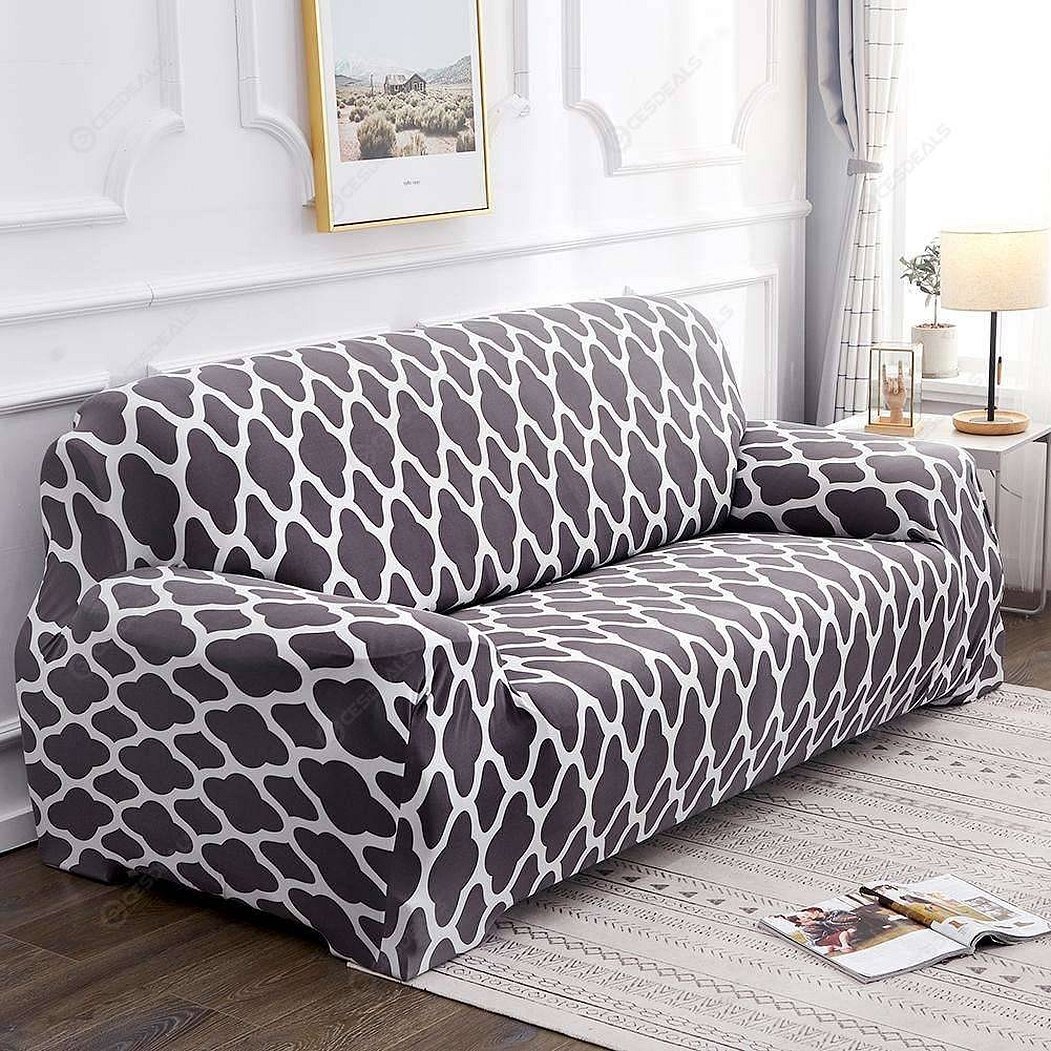
General recommendations for sewing
Despite the fact that a sofa cover is not a complex sewing detail, the following recommendations should still be followed during its production:
- When purchasing material, it is best to take fabric with a reserve of about one and a half meters. In the future, the remaining textile during operation will be useful for possible repairs.
- When cutting, you should not skimp. You can always cut off excess, but you will not be able to add material.
- It is not recommended to sew the parts together immediately, neglecting the basting.
- Since the load on the seams during use of the cover is quite significant, it is recommended to stitch the parts twice.
- To make the seam stronger, you need to increase the thread tension. It is best to use reinforced cotton or synthetic threads for sewing covers.
- Since too small stitches disrupt the structural integrity of the fabric fibers, optimal values should be selected. The recommended stitch length is 3 mm.
- If there are pillows on the sofa, it is best to sew a cover for them with a zipper or Velcro fastener.
- To attach the cover to the sofa, you can sew a piping tape or decorative cords to it. This way, the cover can be securely fastened.
If desired, you can decorate the sofa cover. As decorations, you can use all sorts of frills, bows or do embroidery. It should be taken into account that accessories should be selected in the same style as the interior of the room.
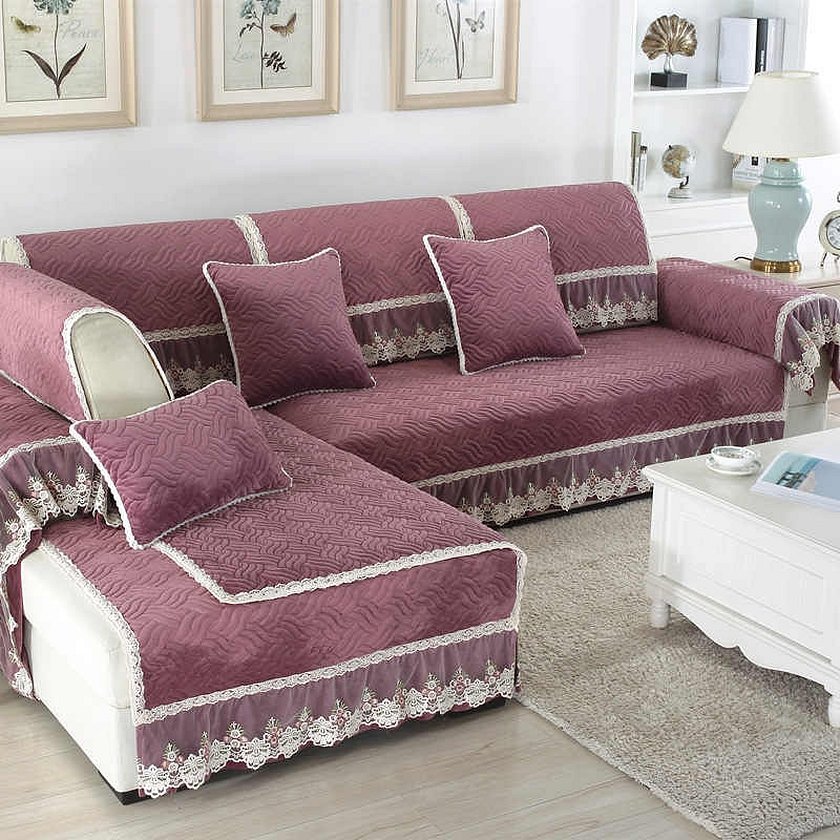
Sewing a sofa cover with your own hands
Once all the necessary tools have been prepared and the fabric has been purchased, you can begin taking measurements and sewing.
Please note! It is recommended to pre-wash, dry and iron the material. Such actions will prevent possible shrinkage during use.
Taking measurements from the sofa
You can sew a beautiful sofa cover only if you use a high-quality pattern. You can cut out a cover according to the size of the sofa only if you take the correct measurements.
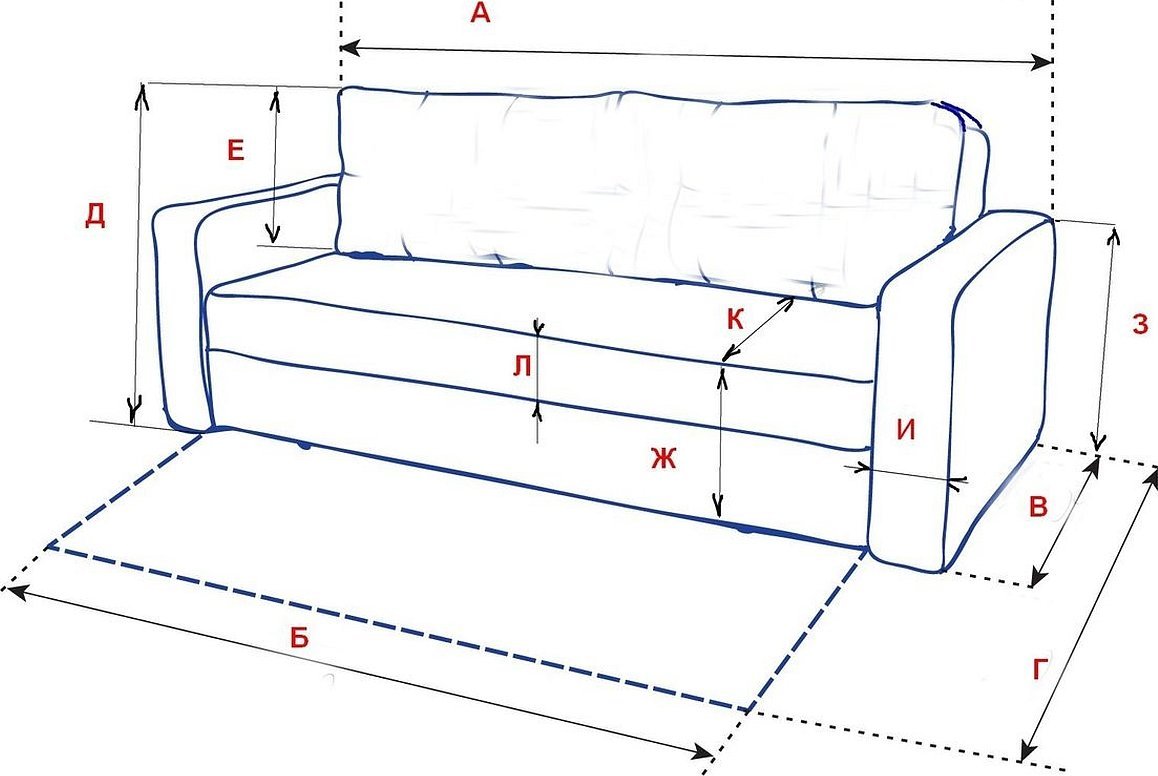
To take measurements, you will need a tape measure. Use it to measure the sofa at its longest and widest point. This will be the length and width. You will also need to take measurements of the armrests and headboard at the most protruding parts. To all the measurements obtained, you need to add 10 cm for hemming and seam allowances. You should add 20 cm to the edges that are tucked inward. It is recommended to provide a fastener in the center of the product, so that the cover can be easily removed.
Patterns of parts
Once all the measurements have been taken, the results should be transferred to paper and the patterns drawn. Then cut out all the details on paper and attach them to the sofa. If everything fits, you can start cutting out the fabric. To do this, iron the fabric and fold it with the right side inward. Then lay out the details on the material and pin them. After this, use chalk to trace the contours and, adding 2 cm, draw a second line along which the details are cut out.

Calculation of the amount of material
Before sewing a cover for a sofa for any of the rooms, you need to correctly calculate the amount of fabric. This stage is one of the first and most important. First of all, you need to measure the length and width of the furniture, and then multiply the resulting result by two.

For a more accurate calculation, after taking measurements, it is necessary to draw the pattern details to scale, taking into account the width of the material, and also do not forget to leave allowances for the seams.
Important! If the fabric for the cover has a pattern or geometric shapes, then the material consumption increases, since they need to be matched at the seams.
Secrets of high-quality tailoring
You can sew a beautiful and comfortable sofa cover with your own hands, even without having any specific skills. To do this, you just need to follow these recommendations:
- For the cape, you should choose a fabric that is not too stiff, but it must be dense.
- It is best to make the pattern a little larger than the required size. During the sewing process, it can be perfectly adjusted to the dimensions of the sofa.
- If there are animals in the house, the fabric should be additionally reinforced with foam rubber.
- If minor flaws were made during sewing, resulting in some unfortunate spots, they can be hidden with the help of decoration.
- The pattern must be made extremely carefully, carefully planning the sewing and joining of the parts.
- To avoid the cover from being under stress when stretched, it should be made loose. Such a product will last longer.
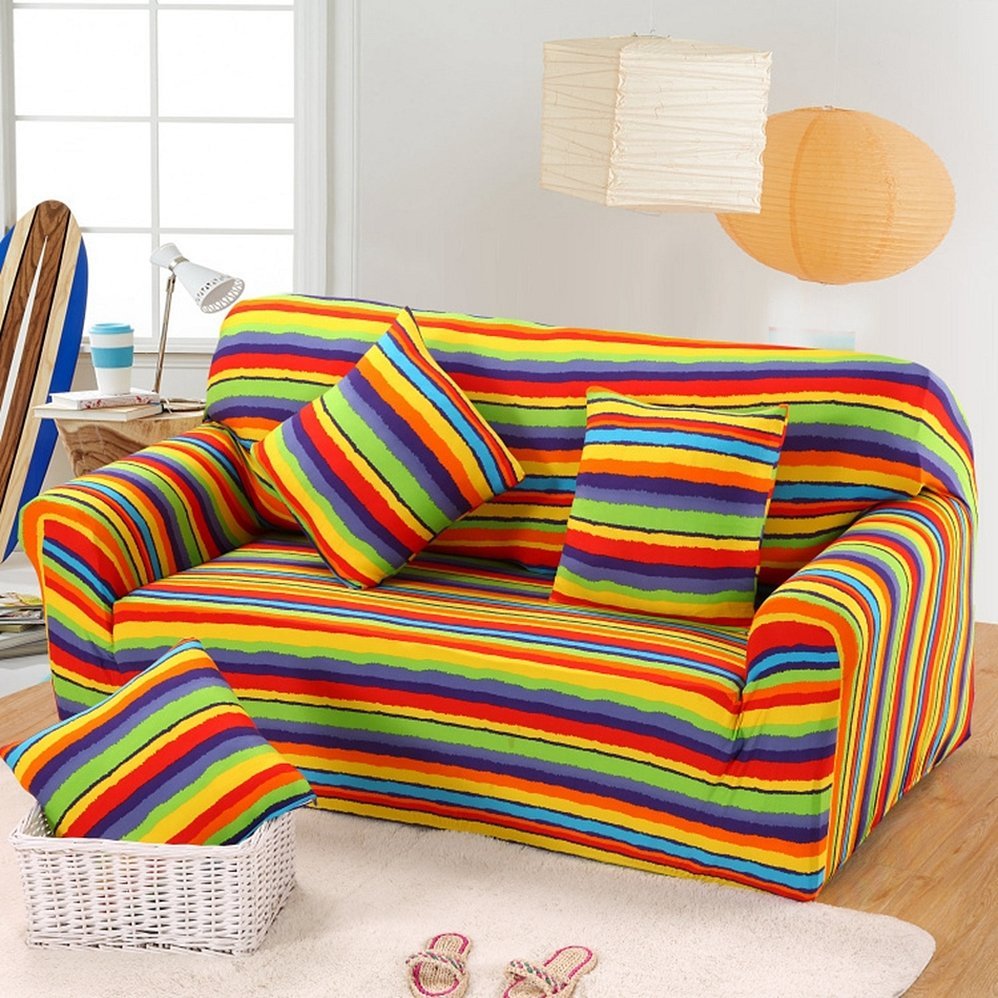
Each time, sewing the cover will be easier, and the product will be more beautiful and better. Therefore, you can subsequently switch to more expensive textiles. Before sewing a Euro-cover for a sofa with your own hands, the step-by-step instructions should be carefully studied. If the cape is sewn for the first time, it is recommended to use inexpensive material.
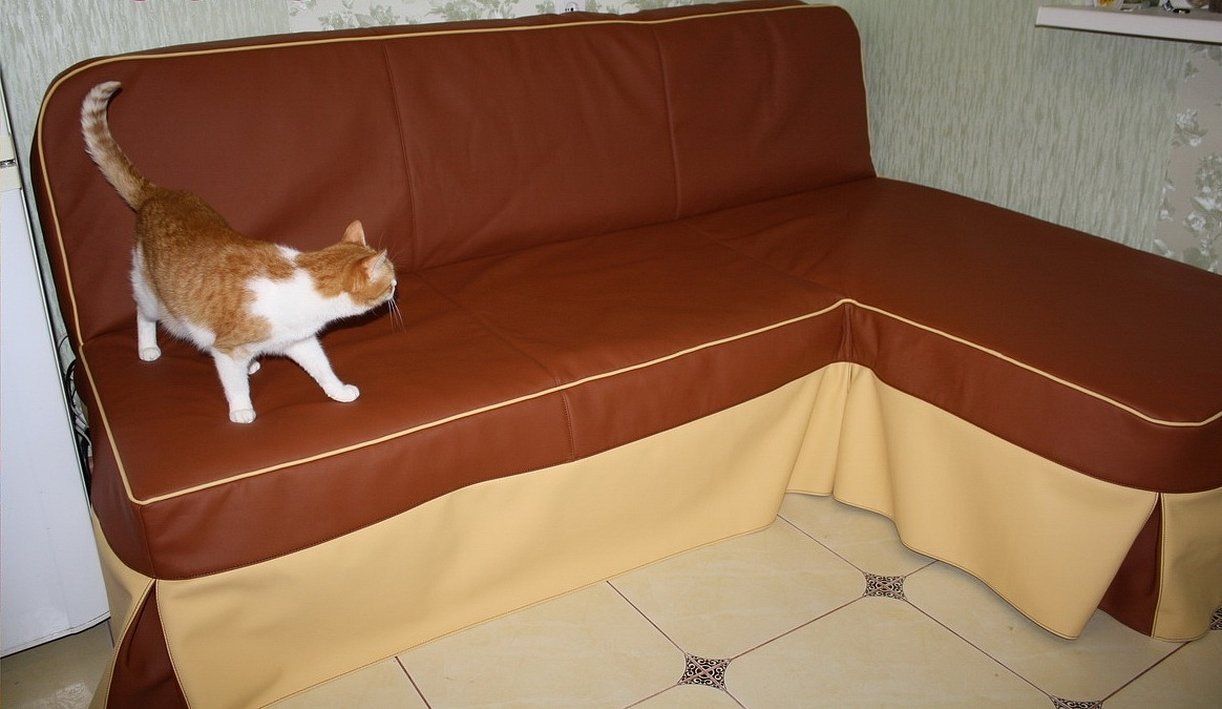
Decorating the product
When sewing a sofa cover, you can decorate it with ribbons, bows, appliques, laces, stripes or decorative piping. Such elements will make the product individual and attractive. In addition, they can be used to mask any flaws that appeared during sewing.
When choosing decorative elements, you should consider the location of the sofa, as well as its shape. If the furniture is in a child's room, it is not recommended to use small and hard details. In the dining room, you can completely abandon the decor. If the sofa is located in the living room, then any decorative elements will do. Everything depends on the owner's preferences. The corners of the sofa can be additionally decorated with pillows.

Do-it-yourself covers for upholstered furniture can be different. Everything depends on taste preferences, intended purpose and shape of the furniture. Before you start sewing a sofa cover, you should decide on the material and get the necessary tools. When cutting and sewing, you must strictly follow the recommendations, showing attention and patience. Only in this case, the cover made by yourself will be unique and will last for a long time.




